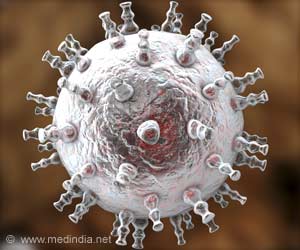A new study has identified a protein that is responsible for the lethality of the influenza virus.
A new study has identified a protein that is responsible for the lethality of the influenza virus.
The 1918 influenza virus pandemic, often called the most devastating epidemic in the recorded history of the world, was responsible for more than 40 million deaths across the globe. The incredible lethality of the 1918 flu strain is not well understood, despite having been under intense scrutiny for many years.But the study, by Dr. Jonathan A. McCullers from the Department of Infectious Diseases at St. Jude Children’s Research Hospital in Memphis, Tennessee and colleagues, has provided key information on the disease.
The team understood the interaction between influenza viruses and bacteria by studying a newly discovered influenza A virus (IAV) protein, called PB1-F2. The gene encoding PB1-F2 is present in nearly all IAVs, including highly pathogenic avian IAVs that have infected humans and the IAV associated with the 1918 pandemic.
“PB1-F2 was recently shown to enhance viral pathogenicity in a mouse infection model, raising questions about its effects on the secondary bacterial infections associated with high levels of influenza morbidity and mortality,” explains Dr. McCullers.
The researchers found that expression of PB1-F2 increased the incidence of and exacerbated secondary bacterial pneumonia in a mouse model. Intranasal delivery of a synthetic peptide derived from a portion of PB1-F2 had the same effects.
Further, an influenza virus engineered to express a version of PB1-F2 identical to that in the 1918 pandemic strain was more virulent in mice and led to more severe bacterial pneumonia, explaining in part both the unparalleled virulence of the 1918 strain and the high incidence of fatal pneumonia during the pandemic.
Advertisement
“Given the importance of IAV as a leading cause of virus-induced morbidity and mortality year in and year out, and its potential to kill tens of millions in the inevitable pandemic that may have its genesis in the viruses currently circulating in southeast Asia, it is imperative to understand the role of PB1-F2 in IAV pathogenicity in humans and animals,” he says.
Advertisement
The study is published in the October issue of the journal Cell Host & Microbe.
Source-ANI
GAN/C











